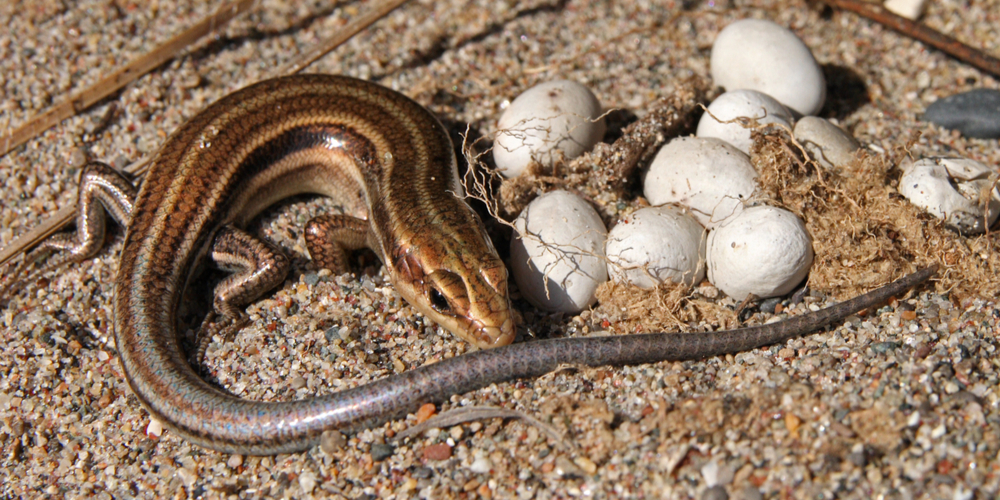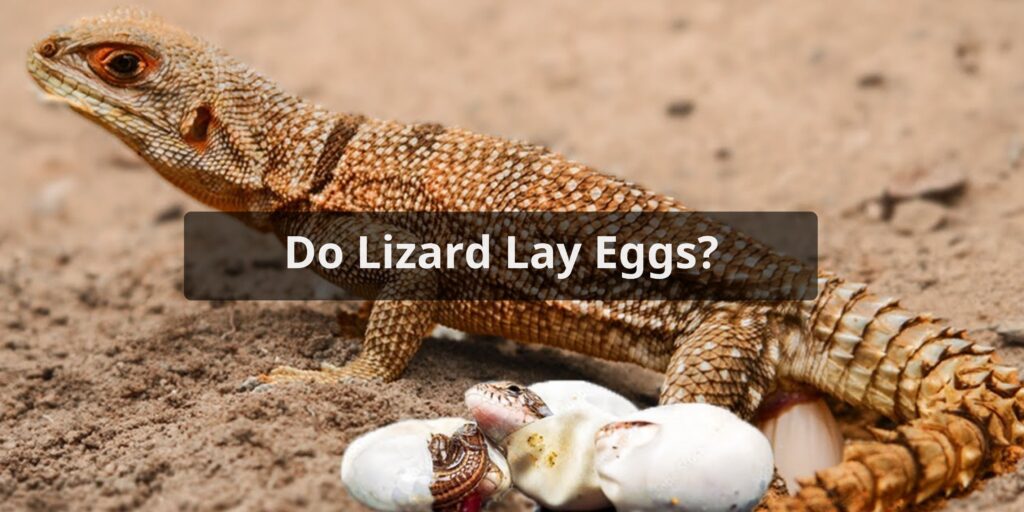Lizards are a diverse group of reptiles found all over the world. There are over 6,000 species of lizards that come in a huge variety of shapes, sizes, and colors. While lizards may look quite different from one another, the majority of lizard species lay eggs as part of their reproductive process.
How Lizards Reproduce
Most lizards reproduce sexually, meaning that the male and female lizard mate to combine their genetic material. After mating, the female lizard retains the sperm inside her body until she is ready to fertilize her eggs.
When it comes time to lay the eggs, the female lizard finds an appropriate nesting site, such as a burrow or warm, humid location. She then releases eggs from her body and fertilizes them internally with the stored sperm. This is known as internal fertilization.
Once the eggs are fertilized, the female deposits them in the nesting site she has chosen. She may lay them individually or in clumps, depending on the species. The number of eggs can range from just a single egg to dozens, again depending on the type of lizard.
Egg-Laying Lizards

The vast majority of lizards, approximately 90-95% of species, lay eggs as part of their reproductive cycle. Some examples of common lizard species that lay eggs include:
- Bearded dragons
- Geckos
- Green anoles
- Monitors and tegus
- Skinks
- Iguanas
- Gila monsters
These lizards all go through internal fertilization and oviparity – the process of laying eggs. The eggs have soft, leathery shells that allow gases to pass through but contain the developing embryo and yolk inside.
Once the eggs are laid, the female lizard provides no additional care in most species. The eggs are left unattended in the nest, exposed to the natural conditions. The embryos develop inside the eggs relying on the yolk for nourishment until they are ready to hatch.
Viviparous Lizards
While most lizards lay eggs, some species are viviparous. This means that they give birth to live young rather than laying eggs. However, viviparous lizards still go through internal fertilization – they do not mate like placental mammals.
Some examples of viviparous lizards include:
- Skinks and skink-like lizards
- Some geckos
- Alligator lizards
- Slow worms
In these species, the embryos develop inside eggs retained within the female lizard’s body. Nutrients are transferred to the embryos, similar to the placenta in mammals. Once the offspring are fully developed, the female gives birth to them fully formed. The newborns are independent right from birth.
Do All Lizard Lay Eggs?
To summarize, the vast majority of the over 6,000 lizard species lay eggs as part of their reproductive cycle. This includes popular lizards like bearded dragons, geckos, iguanas, monitors, and more.
However, a small percentage of lizard species are viviparous. They retain the eggs internally and give birth to live young. So while most lizards lay eggs, not 100% of them do. The method of reproduction depends on the specific species.
Conclusion
Laying eggs is the most common reproductive strategy for lizards. After internal fertilization, females lay soft-shelled eggs in a nesting site. The eggs are left to incubate and the embryos develop on the yolk until ready to hatch. A few lizard species are viviparous, meaning they give birth to live offspring, but oviparity is far more common in the lizard world. Understanding how different lizards reproduce provides insight into these fascinating reptiles that have evolved a variety of reproductive methods to continue their lineages.
Read more topic about:
FAQs
What is the typical number of eggs in a lizard clutch?
Lizards vary in clutch size, but the typical number of eggs in a lizard clutch ranges from 2 to 100, depending on the species. Smaller lizard species tend to have smaller clutches, while larger species may lay more eggs.
Are there any lizard species that give live birth?
Yes, some lizard species do give live birth instead of laying eggs. These species are known as “viviparous” lizards. Examples include some skinks and geckos. In viviparous species, the eggs develop inside the mother’s body, and she gives birth to live, fully-formed young.
What is the incubation period for lizard eggs?
The incubation period for lizard eggs varies widely among species. It can range from a few weeks to several months. Factors like temperature and humidity influence the duration. In general, warmer conditions lead to shorter incubation periods, while cooler conditions extend the time.
Do lizards provide any parental care to their eggs?
Most lizard species do not provide parental care to their eggs. They lay the eggs and leave them to hatch on their own. However, a few species may exhibit limited care, such as guarding the nest or regulating temperature by basking.
Can you tell if a lizard is pregnant by looking at it?
Determining if a lizard is pregnant by visual inspection is challenging. Lizard reproductive systems are internal, and pregnancy signs aren’t obvious externally. To know if a female lizard is carrying eggs or developing embryos, you’d likely need specialized equipment like ultrasound or X-ray imaging.



